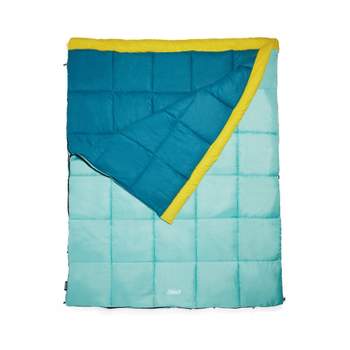Coleman : Sleeping Bags
Sponsored
5 results
Sponsored
Related categories
- Camp Bedding
- Camping Blankets & Pillows
- Camping Cots, Mats & Pads
- Sleeping Bags sleeping-bags
- Sleeping Bags outsunny
- Sleeping Bags costway
- Sleeping Bags intex
- Sleeping Bags side-zipper
- Sleeping Bags side-zipper
- Sleeping Bags serenelife
- Sleeping Bags wrap
- Sleeping Bags wrap
- Sleeping Bags kamp-rite
- Sleeping Bags leisure-sports
- Sleeping Bags drawstring
- Sleeping Bags drawstring
- Sleeping Bags wenzel
- Sleeping Bags 2-sided-zip
- Sleeping Bags 2-sided-zip
- Sleeping Bags sleepingo
Related searches
- backpacking sleeping bag
- sleeping bag
- kids camping sleeping bag
- sleeping bag padded
- double sleeping bag
- fur sleeping bag
- xl sleeping bag
- flannel sleeping bag
- sleeping bag with pillow
- coleman sleeping bag
- 0 degree sleeping bag
- camping bedding
- youth sleeping bags
- waterproof sleeping bag
- black sleeping bag
- camping bag
- coleman cotton sleeping bag
- thermal sleeping bag
- sleeping bags adults
- colman sleeping bag
Coleman : Sleeping Bags
Finding the Perfect Sleeping Bag for Your Outdoor Adventures
When it comes to outdoor adventures, having a reliable and comfortable sleeping bag is essential for a good night’s rest. Whether you’re camping in the mountains, backpacking through the wilderness, or simply enjoying a night under the stars in your backyard, choosing the right sleeping bag can make all the difference in your overall experience.
Understanding Temperature Ratings
One of the most critical factors to consider when shopping for a sleeping bag is its temperature rating. This rating indicates the lowest temperature at which the bag can keep you warm. Look for sleeping bags with temperature ratings appropriate for the conditions you’ll be facing. Keep in mind that temperature ratings can vary based on factors like insulation type and personal tolerance to cold.
Types of Insulation
Sleeping bags come with different types of insulation, each offering its own set of advantages. Down insulation provides excellent warmth-to-weight ratio and compressibility, ideal for backpacking. Synthetic insulation retains its warmth even when wet, making it a reliable choice for damp conditions. Consider your priorities—weight, compressibility, and weather conditions—to determine which insulation type suits your needs best.
Choosing the Right Size and Shape
Sleeping bags come in various sizes and shapes, including mummy, rectangular, and semi-rectangular. Mummy-shaped bags are snugger and more thermally efficient, making them suitable for cold weather camping. Rectangular bags offer more room to move around and can be zipped together with another bag for couples or extra space. Consider your sleeping style and comfort preferences when selecting the size and shape of your sleeping bag.
Additional Features to Consider
Beyond temperature rating and insulation type, there are several additional features to consider when shopping for a sleeping bag. Look for features like a draft tube along the zipper to prevent heat loss, a hood to keep your head warm, and a stash pocket for storing essentials like your phone or flashlight. Some bags also come with special features like ventilation zippers or integrated pillows for added comfort.
Accessories and Gear
In addition to a sleeping bag, other gear like sleeping pads, quilts, and compression sacks can enhance your camping experience. A sleeping pad provides insulation from the cold ground and adds cushioning for a more comfortable sleep. Quilts offer a lightweight alternative to traditional sleeping bags, ideal for ultralight backpacking. Consider investing in a sleeping bag liner for added warmth and cleanliness, and a water-repellent compression sack to keep your gear dry in wet conditions.
Conclusion
Choosing the right sleeping bag and accessories is crucial for a comfortable and enjoyable outdoor experience. Consider factors like temperature rating, insulation type, size, shape, and additional features to find the perfect sleeping bag for your needs. With the right gear, including sleeping pads, quilts, and compression sacks, you’ll be ready to embrace the great outdoors and rest easy under the stars.
FAQs
Q: How do I clean my sleeping bag?
A: To clean your sleeping bag, follow the manufacturer’s instructions carefully. Most sleeping bags can be hand-washed with a mild detergent and then air-dried thoroughly. Avoid using harsh chemicals or machine washing unless specified by the manufacturer.
Q: Can I use a sleeping bag for camping in all seasons?
A: While some sleeping bags are designed for use in all seasons, it’s essential to check the temperature rating and insulation type to ensure suitability for different weather conditions. For extreme cold or hot temperatures, you may need specialized sleeping bags or additional insulation.
Q: How do I store my sleeping bag when not in use?
A: Store your sleeping bag loosely in a cool, dry place, preferably in a storage sack or mesh bag to maintain loft and prevent compression of the insulation. Avoid storing your sleeping bag in a compressed state for extended periods, as this can damage the insulation and reduce its effectiveness over time.




